Musée Carnavalet Guide: Exploring the History of Paris
The Musée Carnavalet is a must-see museum for anyone who loves history or wants to learn more about the history of Paris.
Dedicated to the fascinating history of the French capital, the museum offers a journey through time, from its ancient origins to the modern era.
Musée Carnavalet is also famous for its big French Revolution collection, from paintings to documents and even personal belongings of important figures of the period. The museum is sometimes referred to as the French Revolution Museum.
Located in the heart of the Marais district, the museum is housed in two historic mansions: the Hôtel Carnavalet and the Hôtel Le Peletier de Saint-Fargeau.
As one of the oldest museums in Paris, having opened its doors in 1880, the Musée Carnavalet is completely free to the public, making it an unmissable stop for anyone looking to learn more about the story of this iconic city.

Disclosure: This post does contain affiliate links that I earn a small commission for at no extra cost to you. Any purchases you make through my links help keep the site running. Thanks in advance for your support!
The Carnavalet Museum’s collection is displayed on four floors and organized chronologically, from the Prehistory of Paris to its present day.
As mentioned before, the entrance is completely free, but if you wish, you can book a guided tour through the museum.
The museum has a total of four floors,
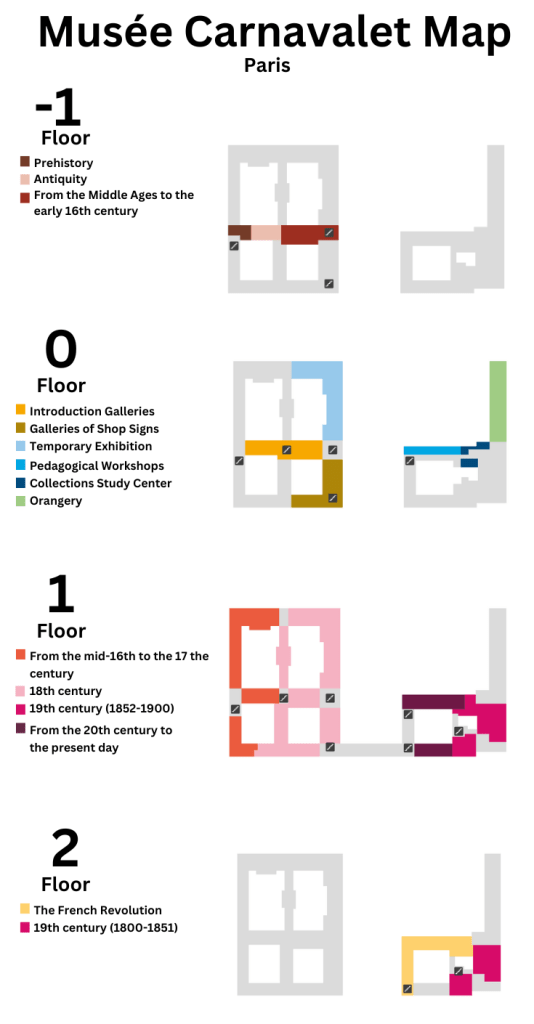
Ground Floor
The ground floor, which is, the first part of the museum that you see when you visit it, is an introductory area, the first room is dedicated to symbols and the motto of Paris, providing a summary of the city’s development, from ancient times to the present day. It covers some of the most important buildings, people, and events.
The second room tells the story of the museum, and its origins and explains briefly what you can expect from its collection.
It is also on the ground floor where you will find the Signs room, displaying a variety of shop signs that were once part of the streets of Paris.
From here, I suggest starting your tour on the underground, for a more complete and in-depth experience.
Basement
Although most people who visit the Carnavalet museum tend to head to the French Revolution and Enlightenment period, I highly recommend starting with the Basement.
Here, the museum covers the prehistory and antiquity of Paris, from its beginning, its first settlements, and the Roman conquest, when the city received the name of Lutetia, to the Middle Ages until the 16th century.
First Floor
The first floor is dedicated to the mid-16th century to late 18th century, covering some aspects of the reigns of Henry II and Catherine de Medicis to Louis XV, as well as some major urban transformations of the capital of the period
On this floor, you will learn more about Madame de Sévigné, a French writer who contributed to the influence of Paris.
Second Floor
The second floor covers mostly the French Revolution, which is the most famous event in French history. Here you will find documents, and paintings of the French Revolution period, depicting important moments from the beginning of this bloody period to the fall of the monarchy.
After that, the museum takes you to the First Republic, and to Napoleon Bonaparte period, displaying portraits of him and his wife.
On your way down, you will pass by Napoleon III’s history and the siege of Paris, to Haussmann, all the way to the Belle Epoque, and to the present day.
The museum is very complete, covering all aspects of the French capital history, it is a must if you want to learn more about this fascinating city.
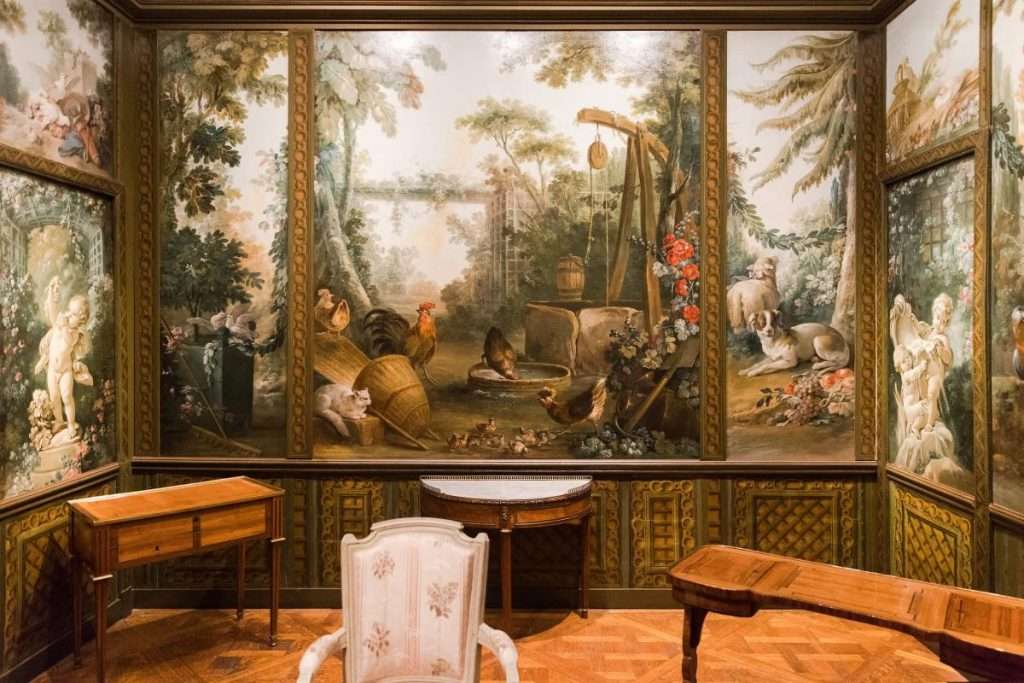
The Salon Demarteau
The Salon Demarteau is a true masterpiece of Rococo interior design, originally part of the home of Gilles Demarteau, an 18th-century engraver and art dealer.
This luxurious salon, meticulously reconstructed at the museum, reflects the refined aesthetic of Parisian high society during the reign of Louis XV.
The walls are decorated with exquisite wood paneling, known as boiseries, displaying carvings of floral motifs, cherubs, and scrolls, all hallmarks of the Rococo style.
This salon offers a rare opportunity to experience the artistic and decorative choices that defined the period’s opulent living spaces.
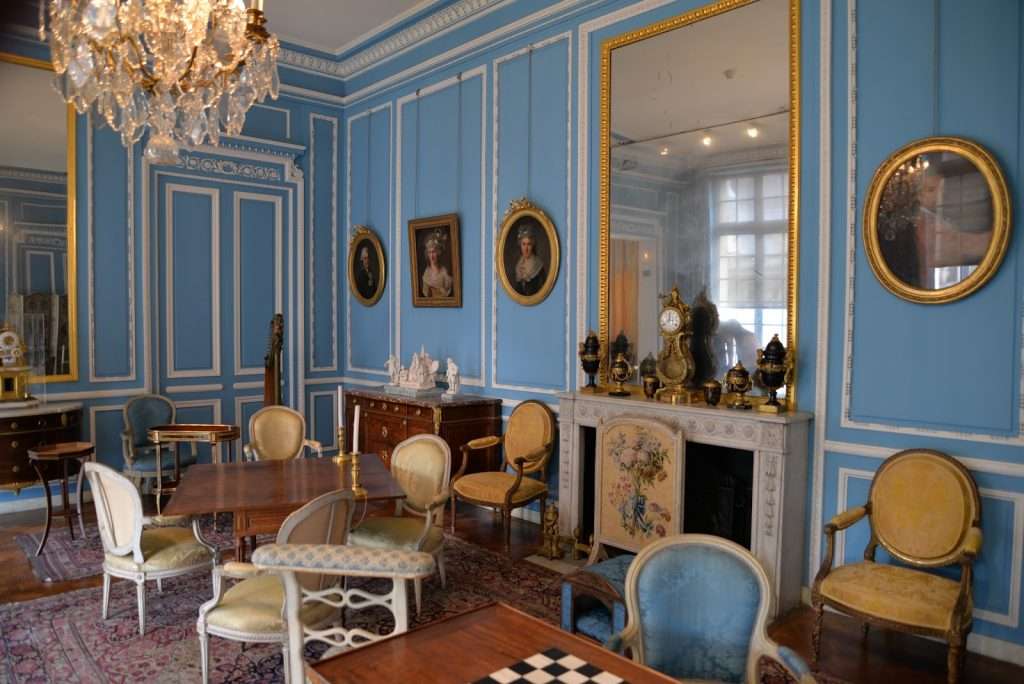
Salon of the Hôtel de Breteuil
The Salon of the Hôtel de Breteuil is another stunning example of 18th-century French aristocratic interior design.
Originally part of the Hôtel de Breteuil, a grand Parisian mansion, this salon is decorated with carved boiseries (wood paneling), featuring floral patterns, garlands, and scrolling foliage.
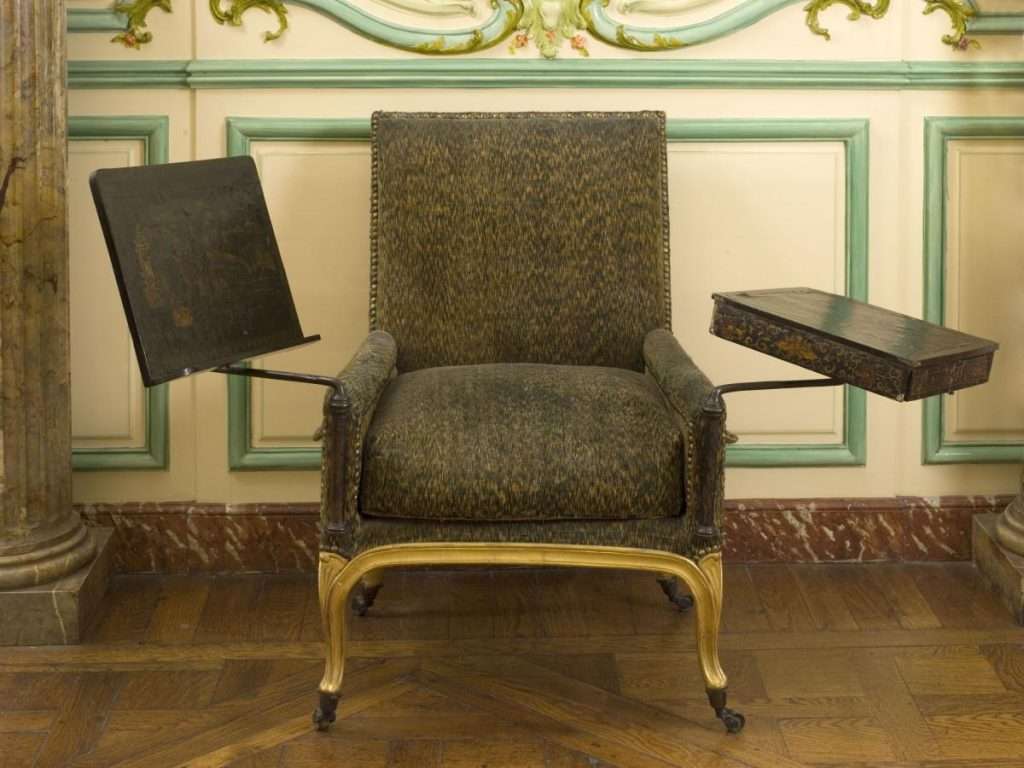
Voltaire’s Armchair
One of the standout pieces of Musée Carnavalet is Voltaire’s armchair, a relic from the final years of the Enlightenment philosopher.
This upholstered armchair, simple yet elegant, is where Voltaire spent many of his last days, reflecting on his life’s work and chatting with his companions and friends.
Voltaire’s ideas on civil liberties, freedom of speech, and the separation of church and state profoundly influenced the Enlightenment and the French Revolution.
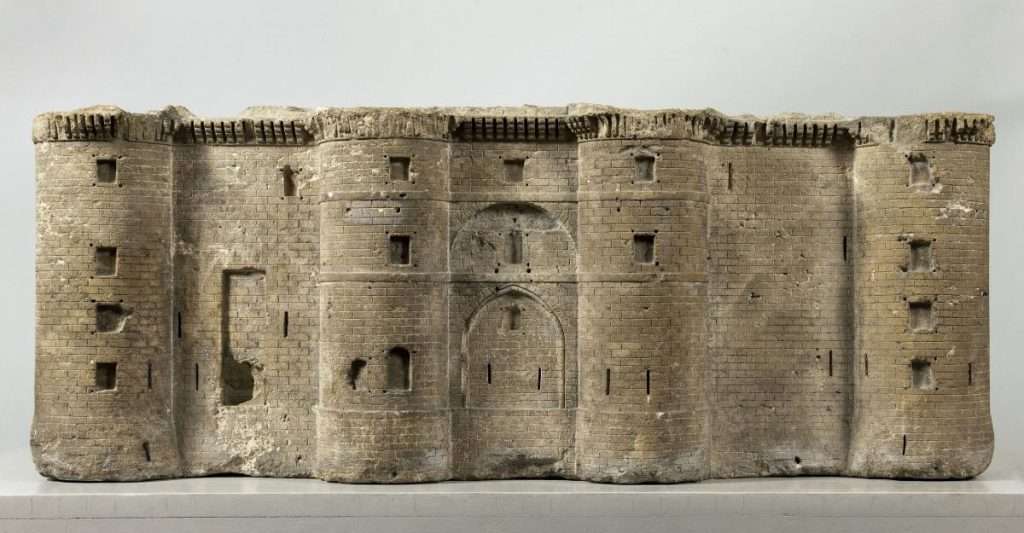
Model of the Place de la Bastille (1789)
One of the most famous highlights of the Musée Carnavalet is this model of the Place de la Bastille.
It is made using a stone from the Bastille itself, which has been made into a model of the infamous prison, a symbol of royal oppression.
The model is a perfect miniature of what the Bastille looked like before its storming on July 14, 1789, and shows its massive walls, towering structures, and surrounding areas.
Here visitors can have a good 3D view of this (in)famous building that no longer exists in Paris.
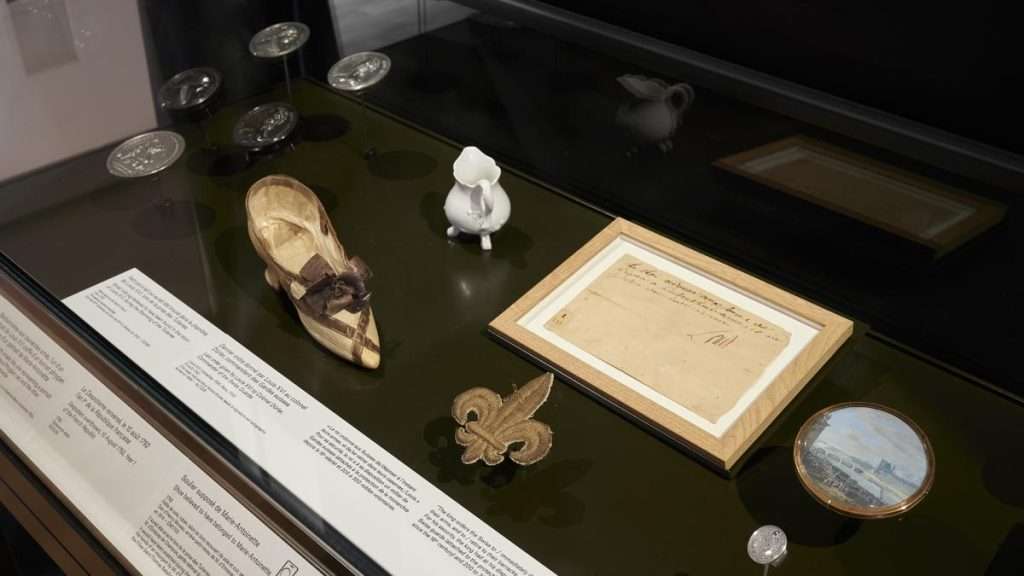
Marie Antoinette’s Personal Belongings
The museum houses a collection of personal items from Marie Antoinette.
Among the items on display are her sewing kit, a lock of her hair, and porcelain cups used during her imprisonment in the Temple Tower.
Although these are simple everyday objects, they carry immense historical weight, as they reflect the queen’s daily life during one of the most tumultuous periods in French history.
The collection also includes a shoe she wore during her captivity, adding a deeply personal touch to the tragic story of her downfall.
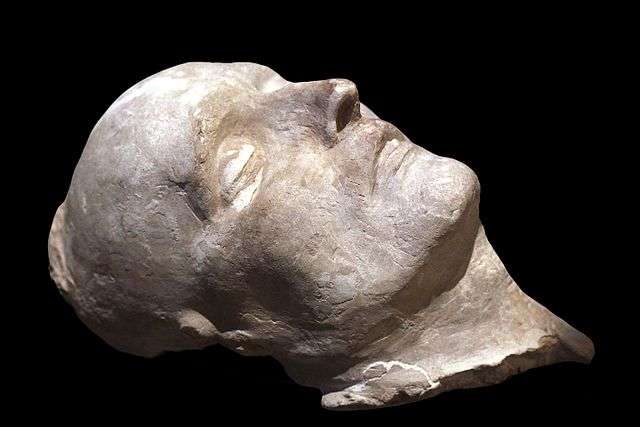
Napoleon I’s Death Mask
Wondering if all those portraits of Napoleon were accurate? That’s the chance to find out.
At Musée Carnavalet you have the chance to be face-to-face with this historical figure.
Cast shortly after his death in 1821 on the island of Saint Helena, this mask preserves the face of Napoleon Bonaparte as he lay in eternal rest.
The mask’s serene expression contrasts sharply with the tumultuous life of the former emperor, who had once dominated much of Europe.
While contemplating the mask, it is impossible to not reflect on life and the turns it takes sometimes: A man whose ambition and military genius shaped the course of history, yet whose final years were spent in exile, far from the glory of his earlier reign.
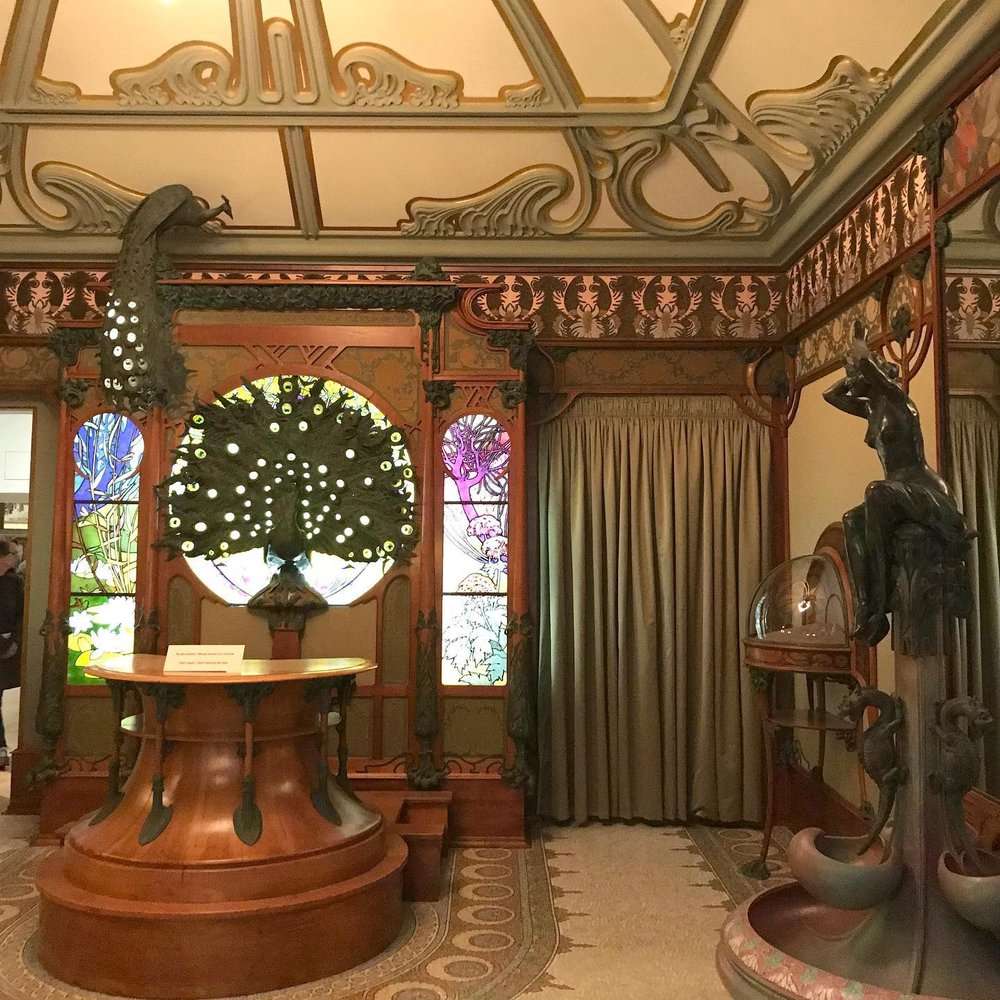
Fouquet’s Jewelry Store (Late 19th Century)
A beautiful representation of early 20th-century Art Nouveau craftsmanship.
The shop, originally opened in 1901 by Georges Fouquet, became famous for its luxurious jewelry designs, heavily influenced by the Art Nouveau movement.
The store itself was a masterpiece, with its interior created by the famous artist Alphonse Mucha, whose work represented very well the elegance and fluidity of this artistic period.
In 1923, Art Nouveau was in decline, so Georges Fouquet, redecorated his shop in an Art Deco style, he carefully dismantled the Mucha-designed pieces and donated it.
It was then put on display at the Musée des Arts Décoratifs, at first, and then to the Musée Carnavalet.
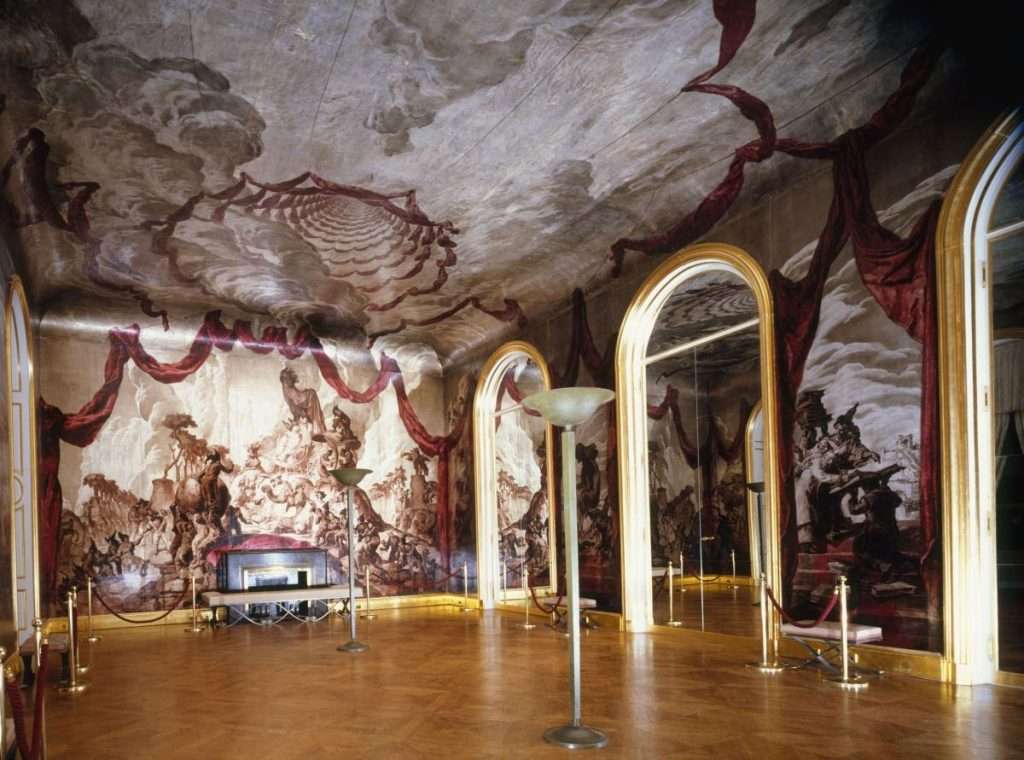
Surrealist Ballroom of the Hotel de Wendel
The Surrealist Ballroom of the Hôtel de Wendel is a remarkable example of how avant-garde art movements influenced interior design in early 20th-century Paris.
Originally part of the luxurious Hôtel de Wendel, a residence owned by the prominent Wendel family, the ballroom was designed in the 1920s and reflects the bold and imaginative spirit of the Surrealist movement.
The room’s décor combines unconventional and dreamlike elements, including distorted mirrors, and surreal motifs that challenge traditional design norms.
It all captures the essence of surrealism very well, which intends to unlock the imagination and blur the boundaries between reality and fantasy.





